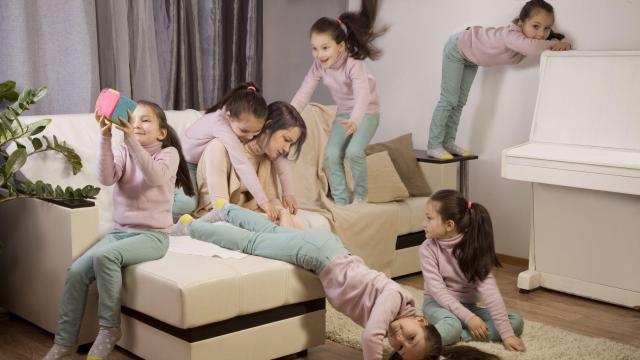I don’t know if you’ve noticed, but kids have a lot of energy. If they’re not running off or climbing something, they’re asking questions or wanting to be entertained, all of which can be hard to keep up with if you ever want to also do other things. But then there are the hyperactive kids, who bring with them a whole other level of “energetic.”
Although the reasons for hyperactivity vary, their effects on parents don’t. Keeping up with a hyperactive child, which includes keeping them from trying any death-defying stunts they may think up, is exhausting.
With my own hyperactive son, wearing him out is a challenge and a half. He’s the kid climbing the highest structure at the playground, the kid running off at a moment’s notice into a crowd, as well as the kid who is hopping and jumping while the rest of his playmates are walking. Meanwhile, I’m the mother with the messy hair, holding her third cup of coffee for the day, spending all her time running after him, terrified he’s going to need yet another visit to the ER.
When my son is getting enough activity, he’s a sweet, happy kid. When he’s not, he’s restless, cranky, and prone to acting out. It’s important to provide him with an outlet for his energy, but all too often, he’ll wear me out, instead of the other way around.
What causes hyperactivity in some kids?
It’s important to provide hyperactive kids with appropriate outlets for their energy — but what are the best outlets and how do you provide them without exhausting yourself in the process? According to the website “Your Kid’s Table,” written by Alisha Grogan, a licensed pediatric occupational therapist and mother to three boys, helping hyperactive kids burn off their energy requires a slightly different strategy than with kids who aren’t hyperactive.
According to Grogan, hyperactivity is often related to sensory issues, which causes them to constantly seek out new sensations. In order to help your hyperactive kid, it’s not enough to just have them run around until they are exhausted; but rather, it helps to be strategic about their activities to give them what they need.
Grogan’s advice for handling hyperactive kids is to come up with activities that fit one of three criteria, varying your strategy according to your child’s need at that particular moment. These solutions are:
Offer activities with rhythm and structure
Hyperactive kids have a lot of energy, but that doesn’t mean they don’t crave structure, whether they realise it or not. Jumping up and down is great for burning off energy; jumping up and down to the rhythm of their favourite song is even better.
For my son, he loves dance parties with dad, which involves the two of them jumping up and down while singing songs. His movement is a little more directed during a dance party, while his mood is just that much better.
Other options include playing sports, going for a walk, climbing a free-standing structure or a rock wall, or setting up an obstacle course. The movement helps burn off the energy, while the structure helps keep them a little more focused.
Offer free active time
Structured play is important, but sometimes, you just need to let your kid run a little wild, so they can get all that restlessness out of their system. This could be in the form of unstructured play time at a park or playground, a wrestling contest with dad, jumping up and down on the bed, or anything else that can help them get that excess energy out of their system.
They are kids, after all, which means that sometimes you just need to embrace the chaos. As long as no one gets hurt and nothing valuable gets broken, it’s ok to let lean into that restless energy for a little bit. Just make sure you’ve had your coffee and the breakables are secured.
Offer a relaxing environment to help with transitions
Most kids struggle with transitions, such as going from active time to quiet time. Hyperactive kids seem to struggle a little bit more than most, which makes it that much more important to provide a smooth transition from active time to quiet or resting time.
If you’ve got a hyperactive kid who is showing signs of being tired but just can’t seem to wind down, a good strategy is to transition them into a relaxing environment. This could include dimming the lights, rocking them back and forth, or playing soothing music. If quiet time is what you are after, it can help to organising their room, which can help put them in a calmer frame of mind. (And us, for that matter.)

Leave a Reply
You must be logged in to post a comment.